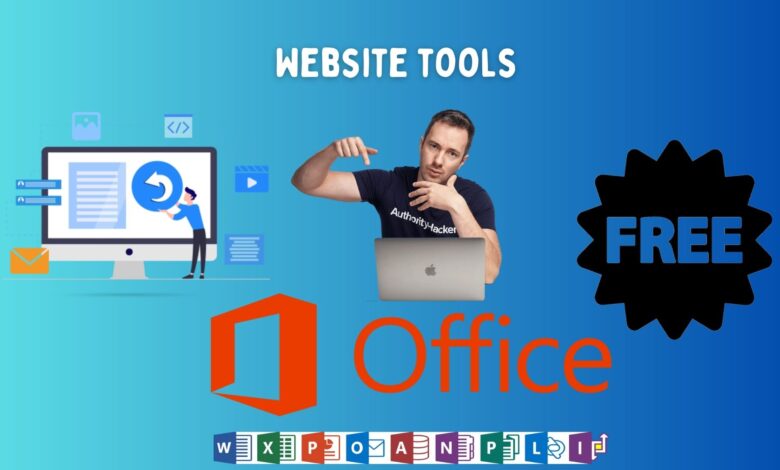AI and the future of work: everything is about to change

New York (CNN) In a few months, you can ask. A A virtual assistant to record meeting notes during a work call, summarize long email threads and quickly draft suggested responses, quickly create a custom chart in Excel, and convert a Word document to a PowerPoint presentation in seconds.
And this is only on Microsoft 365 platforms.
Last week, the rapidly evolving landscape of artificial intelligence seemed to leap forward again. Microsoft and Google each It was announced New AI-powered features for their signature productivity tools and OpenAI have introduced the next-generation version of the technology that powers their viral chatbot tool, ChatGPT.
Suddenly, AI tools that have long worked in the background of many services, are now more powerful and appearing in a wider and growing range of workplace tools.
Google’s new features include: Promise “Brainstorming” and “editing” in documents to help with writing. Meanwhile, If your workplace uses Slack, a popular chat platform, you can ask the ChatGPT tool to communicate with your colleagues and compose and respond to new messages and include conversations in channels.
OpenAI, Microsoft and Google are at the forefront of this trend, but they are not alone. IBM, Amazon, Baidu and Tencent are working on similar technologies. A long list of startups are also developing AI text assistants and image generators.
The voice from tech companies is clear: AI can make you more productive and eliminate noise work. As Microsoft CEO Satya Nadella put it. During the presentation “We believe this next generation of AI will open a new wave of productivity growth: powerful co-pilots designed to take away from our daily routines and jobs, allowing us to rediscover the joy of creation,” he said on Thursday.
But many new options hit the market, which is confusing and, like in other technology industries in the past decade, raises the question of whether these options exist. Including enabling cheating and removing certain roles (although this may be the intention of some guardians) will live up to the incentive or have unintended consequences.
Even the promise of higher productivity is not clear. An increase in AI-generated e-mails, for example, may increase a sender’s productivity, but reduce the need for recipients inundated with computer-generated messages. And of course, just because everyone has the option of using a chatbot to talk to their colleagues doesn’t mean everyone chooses it.
Forrester analyst Rowan Curran said that integrating this technology “with the core pieces of productivity software that most of us use every day will have a profound impact on the way we work.” “But that change won’t wash away everything and everyone tomorrow – it will take time to learn how to best use these skills to improve and adjust existing work processes.”
Quick change in workplace tools
Anyone who has used the AutoComplete option while typing an email or sending a message has already experienced how AI can speed up tasks. But the new devices promise to go beyond that.
The renewed wave of AI products started about four months ago when OpenAI released a version of ChatGPT based on certain parameters., Amazing users by generating human-average answers to user questions, passing exams at prestigious universities, and writing persuasive essays on a variety of topics.
Since then, technology has been developed by Microsoft “Multibillion dollar” investment At the beginning of this year – only improved. Earlier this week, OpenAI released GPT-4, a more powerful version of the technology that supports ChatGPT and promises to blow previous iterations out of the water.
In early tests and a company demo, GPT-4 was used to design a case, build a working website from a hand-drawn design, and Recreate icon games Like Pong, Tetris or Snake with little to no prior coding experience.
GPT-4 It is a large linguistic model trained on a large amount of online data to generate responses to user queries.
It’s the same technology that underpins two new Microsoft features: “Assistant Pilot,” which helps users edit, summarize, create, and compare documents across platforms, and Business Chat, an agent that rides alongside users as they work and experiment. To understand and understand their Microsoft 365 information.
The agent can, for example, see what’s in a user’s email and on their calendar for the day, as well as documents they’ve been working on, presentations they’ve been working on, people they’ve met and, according to the company, conversations on their team forums. Users can aggregate all documents on a particular project across platforms, ask Business Chat to perform tasks such as writing a status report, and then compose an email that can be sent to their team with an update.
Curran just said. How much these AI-powered tools change work depends on the application. For example, a word processing application can help generate notes and drafts, a slideshow program can help speed up the design and content creation process, and a spreadsheet application can help multiple users communicate and make data-driven decisions. The latter he believes will have the greatest impact on the workplace in the short and long term.
The discussion of how these technologies will affect work “should focus on work rather than work in general,” he said.
Future challenges
Although OpenAI’s GPT-4 update addresses some of its biggest challenges — from its ability to perpetuate bias, sometimes giving inaccurate and offensive responses — there’s still potential. Some of these issues can be traced back to the workplace, especially when dealing with others.
Arijit Sengupta, founder of AIV Solutions, says the problem with any large language model is that it tries to please the user and accept the premise of the user’s statements.
“If people start talking about something, it will be accepted as a norm and then content will start to be generated [related to that]” said Sengupta, exacerbating personal issues that could turn into bullying in the office.
Earlier this week, OpenAI CEO Sam Altman tweeted The technology behind these systems is “still flawed, still limited, and after spending more time with it, it seems more impressive than the first use.” The company reiterated in a blog post that “extreme care should be taken when using language model results, especially in high-level contexts.”
According to Arun Chandrasekaran, an analyst at Gartner Research, organizations need to educate their users about what these solutions are good at and what their limitations are.
“Blind trust in these remedies is just as dangerous as complete lack of faith in its effectiveness,” Chandrasekaran said. “Generative AI solutions can create facts or provide inaccurate information from time to time – and organizations must be prepared to mitigate this negative impact.”
At the same time, many of these applications are not up-to-date (GPT-4 data on which it was trained will be phased out around September 2021). The onus should be on users to do everything from double-checking for accuracy to making the language reflect the voice they want. It will also be important to get buy-in and support from workplaces to get the equipment up and running.
“Training, education and organizational change management are essential to ensure that employees support the efforts and that the tools are used as intended,” says Chandrasekaran.
We offer you some site tools and assistance to get the best result in daily life by taking advantage of simple experiences
